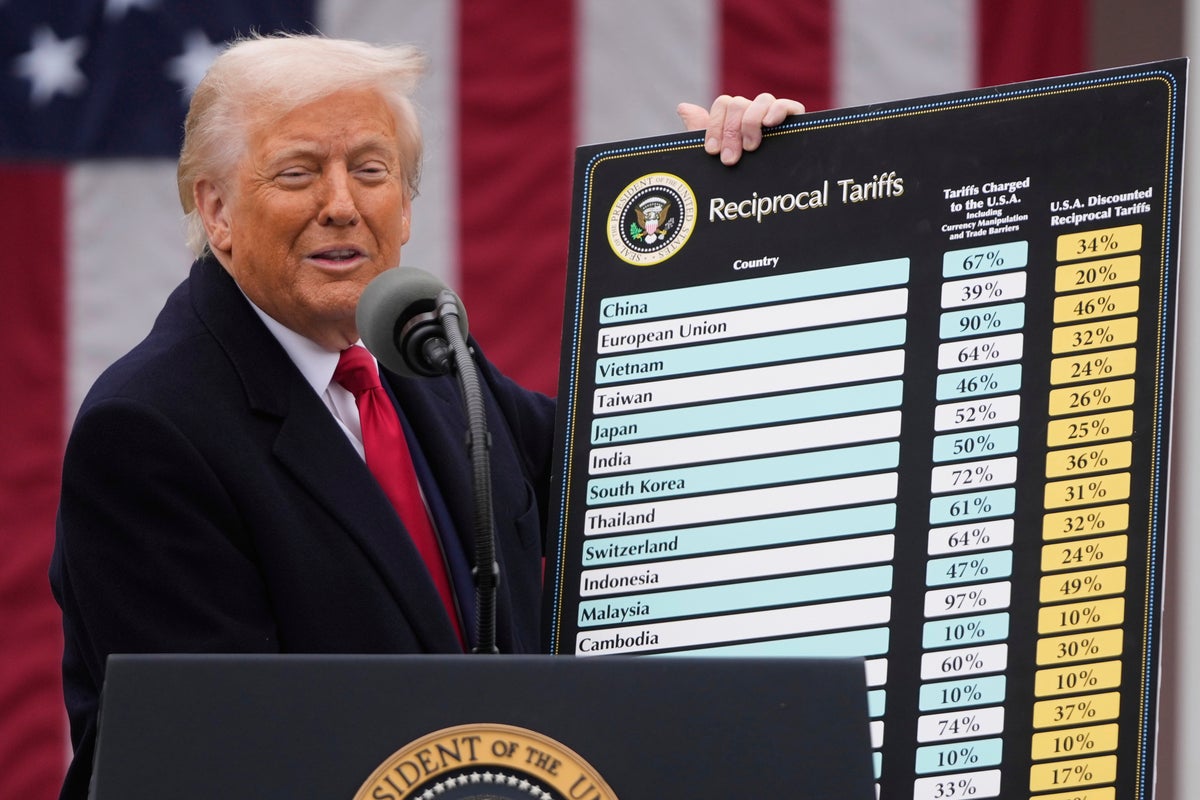The Potential Resurgence of Trade Wars: What to Expect
As former President Donald Trump signals a return to “reciprocal” tariffs, the prospect of renewed trade conflicts with the United States’ economic allies looms large. The implications of this could be significant, and while the exact outcome remains uncertain, various nations are already beginning to react to the prospect of heightened tariffs.
Learn more: A Comprehensive Guide to the Cryptocurrency Market: Risks and Rewards of Digital Currency Investment
Tariff Resumption and International Responses
On a recent Tuesday, Trump announced that his administration would no longer delay the implementation of planned tariffs, which could reach as high as 50% for certain countries. With the deadline set for August 1, several foreign governments are now scrambling to secure agreements with the White House, including the European Union (EU). Trump has expressed optimism about nearing a framework deal with the bloc, which may mitigate some of the immediate tensions.
However, if foreign nations decide to respond aggressively to the proposed tariff rates, U.S. industries located in Republican-leaning districts could suffer the most. Geralyn Ritter, president and CEO of Crowell Global Advisors, emphasised the political sensitivities surrounding these tariffs. She noted that historically, countries have targeted politically significant sectors in retaliation, often choosing products that directly impact the constituencies of key lawmakers.
Historical Context of Tariff Imposition
Earlier this year, the initial rollout of tariffs by Trump was met with retaliatory measures from several countries, including Canada and China. These tariffs were first introduced in April, labelled as “Liberation Day” by the White House, and were specifically designed to target various countries and trading blocs. Notably, agricultural imports became a focal point, with Canada targeting dairy products and China specifically hitting U.S. soybean exports.
The choice of goods subjected to tariffs is rarely arbitrary. For instance, restrictions on semiconductors by China and tariffs aimed at U.S. automakers illustrate how political ramifications often dictate trade decisions. Additionally, the soybean tariffs have disproportionately affected Illinois, a predominantly Democratic state, highlighting the intricate relationship between trade and political landscapes.
The Risks of Grassroots Retaliation
If the U.S. administration and its trading partners revert to the confrontational tactics that characterised the earlier tariff announcements, retaliation could become more grassroots in nature. This is especially relevant as the midterm elections approach, prompting Republicans to focus on safeguarding their slim majorities in Congress. During Trump’s first term, similar dynamics played out, as threats of tariffs were directed towards products from states represented by Republican leaders.
For instance, former European Commission President Jean-Claude Juncker openly threatened tariffs on iconic American products like Harley-Davidson motorcycles and Levi’s jeans in response to U.S. trade policies.
The U.S. Economic Advantage
Despite the potential for impactful retaliatory measures, the U.S. holds a significant advantage due to the size of its economy. Even though certain sectors may feel the effects of foreign tariffs, the retaliatory tariffs imposed by the U.S. can often be more detrimental. This was a lesson learnt by Canada, where attempts to counter U.S. trade aggression yielded minimal impact on the American economy.
Canadian economist Trevor Tombe noted that the initial Canadian tariffs had little effect on the U.S. economy, suggesting a possible underestimation of the U.S.’s economic resilience.
Current and Future Trade Dynamics
Experts like Ritter remain sceptical about the effectiveness of politically charged tariff threats, especially given the current climate of negotiation between the U.S. and its trading partners. The risk of provoking the Trump administration could deter nations from aggressive retaliatory actions. As Ritter pointed out, public threats are unlikely to yield constructive outcomes at this juncture.
Although the Trump administration appears to be making headway in negotiations aimed at preventing tariff hikes, certain countries such as Brazil and India have already indicated plans for retaliatory tariffs. Brazil faced a 50% “reciprocal” tariff recently, while India is contemplating similar measures concerning steel and automotive tariffs.
Economic Stability and Investment Hesitance
As Trump engages in his distinctive style of deal-making, experts predict further tariff increases in the short term. There remains uncertainty regarding the anticipated reshoring of manufacturing and supply chains, which the administration has touted as a primary objective of the new tariff regime. Concerns over economic stability and the volatility introduced by tariffs are causing some investors to hesitate, while others find it challenging to relocate production entirely to the U.S.
The pharmaceutical industry, in particular, faces the risk of market exits rather than attempts to reshuffle production strategies, potentially leading to shortages of essential products.
Conclusion: A Fragile Balance
The White House’s current strategy appears to be one of steadfastness, as any retreat by Trump could exacerbate volatility and invite accusations of weakness. However, financial analysts are increasingly sceptical of the efficacy of such tactics. The pattern of grand declarations followed by retractions has eroded credibility, with critics likening Trump’s approach to that of “the boy who cried wolf.”
As the landscape of international trade continues to evolve, the coming months will reveal whether the U.S. can navigate these turbulent waters without succumbing to the pitfalls of escalating trade warfare.

